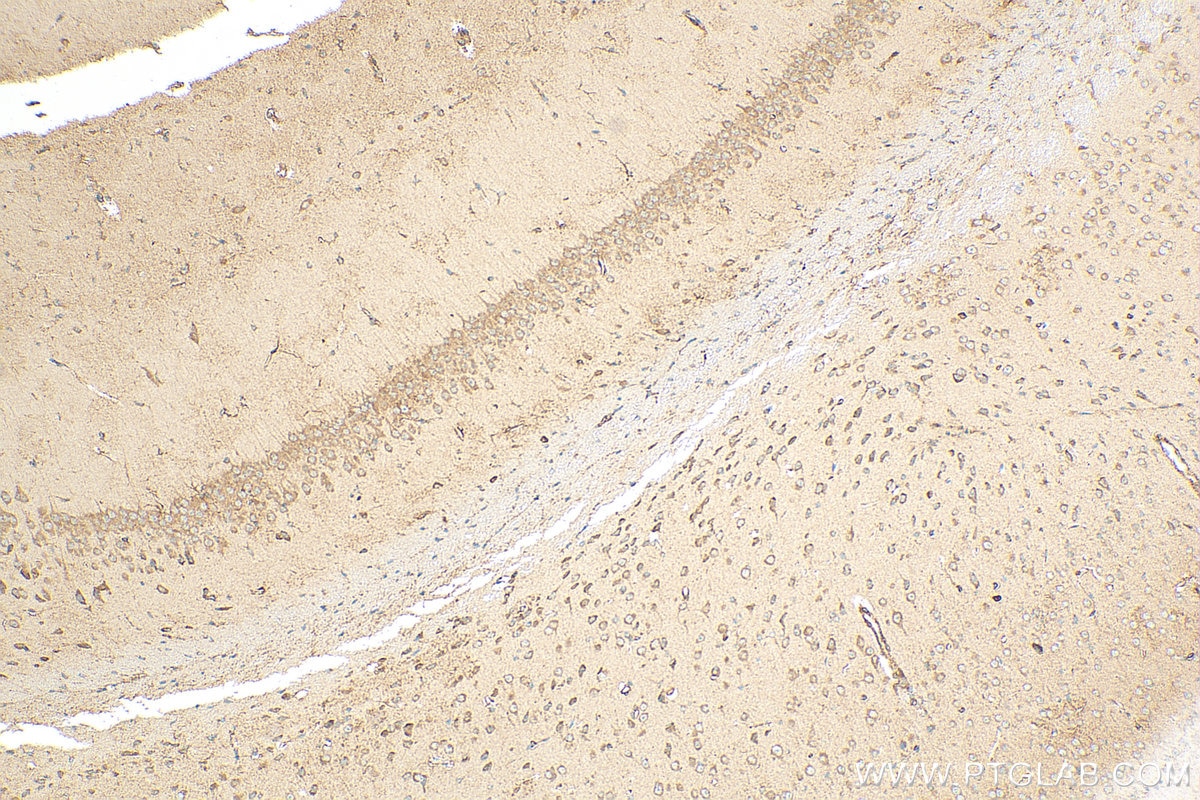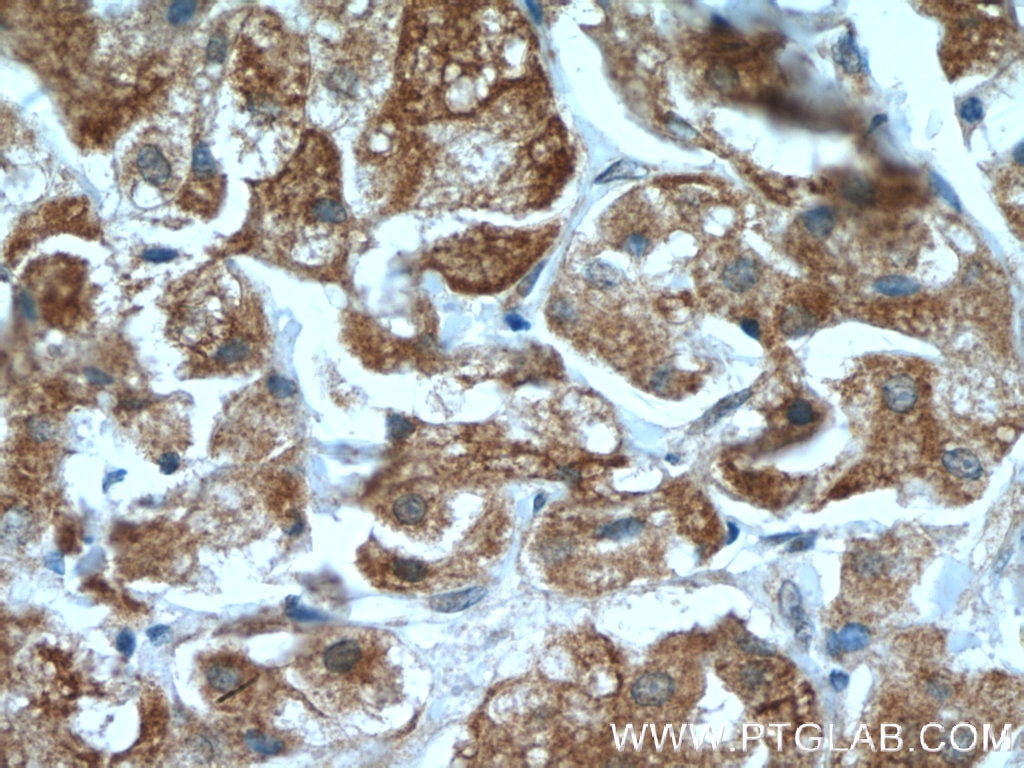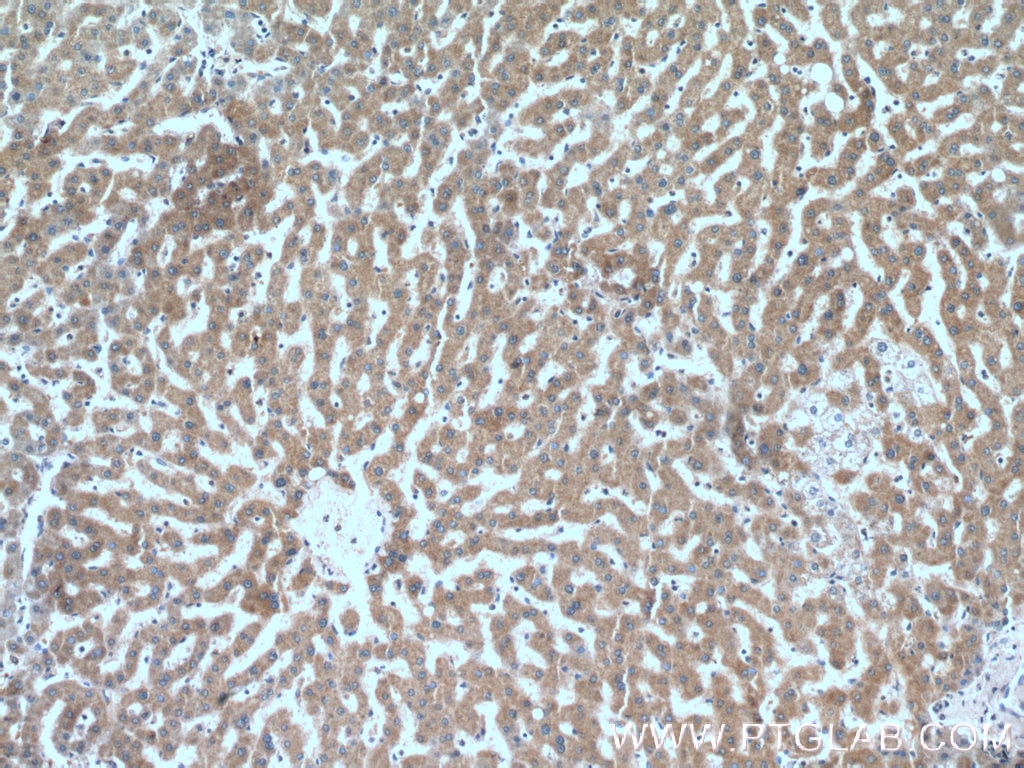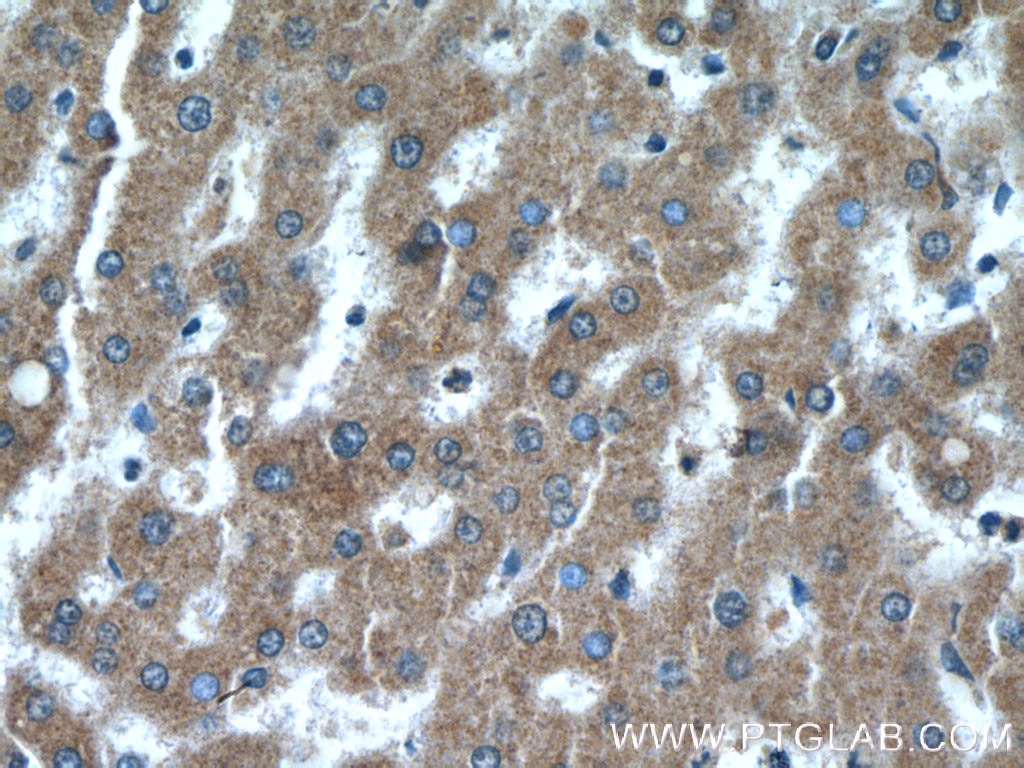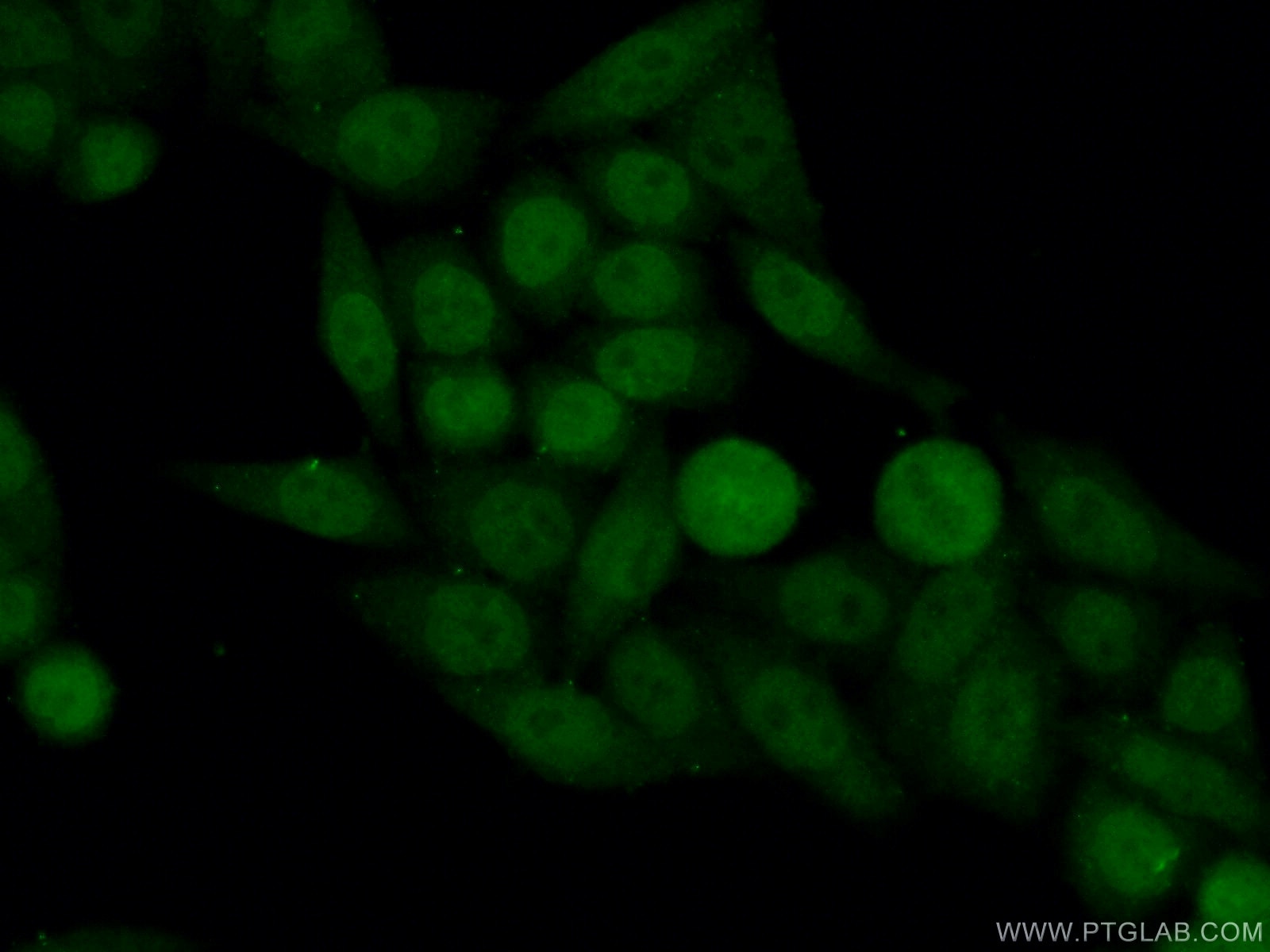- Phare
- Validé par KD/KO
Anticorps Polyclonal de lapin anti-Neurofibromin 1
Neurofibromin 1 Polyclonal Antibody for WB, IHC, IF/ICC, IP, ELISA
Hôte / Isotype
Lapin / IgG
Réactivité testée
Humain
Applications
WB, IHC, IF/ICC, IP, ELISA
Conjugaison
Non conjugué
N° de cat : 27249-1-AP
Synonymes
Galerie de données de validation
Applications testées
| Résultats positifs en WB | cellules HEK-293, cellules HEK-293T, cellules HeLa |
| Résultats positifs en IP | cellules HEK-293, |
| Résultats positifs en IHC | tissu cérébral de souris, tissu de cancer du sein humain, tissu hépatique humain il est suggéré de démasquer l'antigène avec un tampon de TE buffer pH 9.0; (*) À défaut, 'le démasquage de l'antigène peut être 'effectué avec un tampon citrate pH 6,0. |
| Résultats positifs en IF/ICC | cellules HeLa, |
Dilution recommandée
| Application | Dilution |
|---|---|
| Western Blot (WB) | WB : 1:500-1:1000 |
| Immunoprécipitation (IP) | IP : 0.5-4.0 ug for 1.0-3.0 mg of total protein lysate |
| Immunohistochimie (IHC) | IHC : 1:50-1:500 |
| Immunofluorescence (IF)/ICC | IF/ICC : 1:50-1:500 |
| It is recommended that this reagent should be titrated in each testing system to obtain optimal results. | |
| Sample-dependent, check data in validation data gallery | |
Applications publiées
| KD/KO | See 1 publications below |
| WB | See 5 publications below |
| IHC | See 2 publications below |
| IF | See 1 publications below |
| IP | See 1 publications below |
Informations sur le produit
27249-1-AP cible Neurofibromin 1 dans les applications de WB, IHC, IF/ICC, IP, ELISA et montre une réactivité avec des échantillons Humain
| Réactivité | Humain |
| Réactivité citée | Humain |
| Hôte / Isotype | Lapin / IgG |
| Clonalité | Polyclonal |
| Type | Anticorps |
| Immunogène | Neurofibromin 1 Protéine recombinante Ag25799 |
| Nom complet | neurofibromin 1 |
| Masse moléculaire calculée | 319 kDa |
| Poids moléculaire observé | 250-280 kDa |
| Numéro d’acquisition GenBank | M60915 |
| Symbole du gène | Neurofibromin 1 |
| Identification du gène (NCBI) | 4763 |
| Conjugaison | Non conjugué |
| Forme | Liquide |
| Méthode de purification | Purification par affinité contre l'antigène |
| Tampon de stockage | PBS with 0.02% sodium azide and 50% glycerol |
| Conditions de stockage | Stocker à -20°C. Stable pendant un an après l'expédition. L'aliquotage n'est pas nécessaire pour le stockage à -20oC Les 20ul contiennent 0,1% de BSA. |
Informations générales
NF1 codes for neurofibromin, a GTPase-activating protein that negatively regulates RAS/MAPK pathway activity by accelerating the hydrolysis of Ras-bound GTP. NF1 has a high mutation rate and mutations in NF1 can alter cellular growth control, and neural development, resulting in neurofibromatosis type 1 (NF1, also known as von Recklinghausen syndrome).
Protocole
| Product Specific Protocols | |
|---|---|
| WB protocol for Neurofibromin 1 antibody 27249-1-AP | Download protocol |
| IHC protocol for Neurofibromin 1 antibody 27249-1-AP | Download protocol |
| IF protocol for Neurofibromin 1 antibody 27249-1-AP | Download protocol |
| IP protocol for Neurofibromin 1 antibody 27249-1-AP | Download protocol |
| Standard Protocols | |
|---|---|
| Click here to view our Standard Protocols |
Publications
| Species | Application | Title |
|---|---|---|
Nat Commun Targeting NRAS via miR-1304-5p or farnesyltransferase inhibition confers sensitivity to ALK inhibitors in ALK-mutant neuroblastoma | ||
Clin Transl Med IGF2BP3 mediates the mRNA degradation of NF1 to promote triple-negative breast cancer progression via an m6A-dependent manner | ||
Gynecol Oncol Survey of NF1 inactivation by surrogate immunohistochemistry in ovarian carcinomas | ||
Front Genet Characterization of Two Loss-of-Function NF1 Variants in Chinese Patients and Potential Molecular Interpretations of Phenotypes. | ||
Mol Genet Genomic Med A novel mutation in NF1 gene of patient with Neurofibromatosis type 1: A case report and functional study. | ||
J Transl Med The oncogenic role of NF1 in gallbladder cancer through regulation of YAP1 stability by direct interaction with YAP1
|



